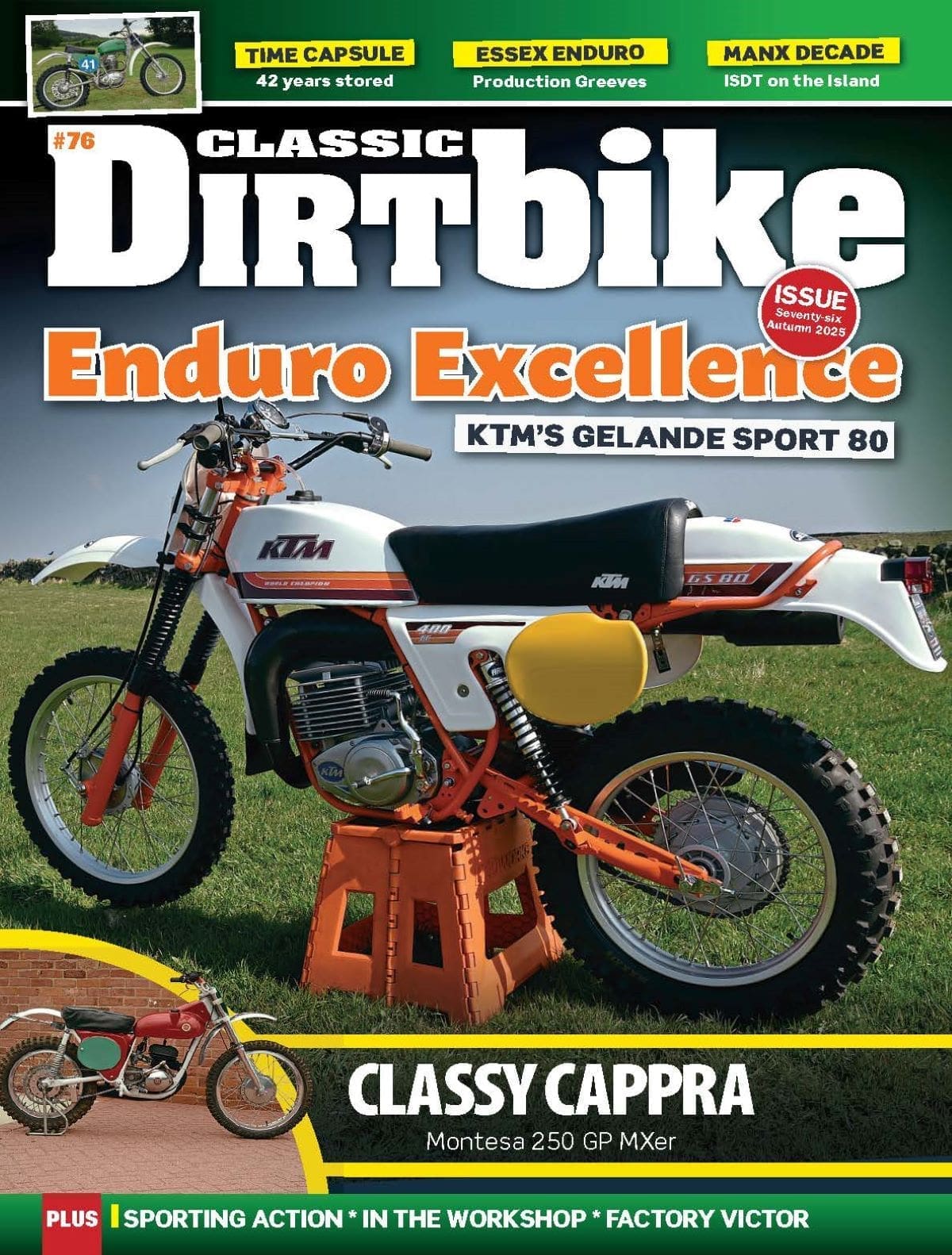When painter and decorator Roger Simkin wanted a Beezer that looked good and went even better, it was Mick Bennett he went to.
Words and pics Tim Britton
Enjoy more Classic Dirt Bike Magazine reading.
Click here to subscribe & save.
Ever regretted selling something? I bet you have. In Roger Simkin’s case it was a neat Triumph engine Cotton, reputed to be an ex-Arthur Lampkin machine. Roger was approached by someone who called his bluff when he put a gulp-inducing price tag on his Cotton.
“I didn’t really want to sell it and thought that would put him off, but the bloke came up with the cash and that was that.”
Luckily, Roger had been discussing a BSA Victor with ace Beezer guy Mick Bennett and with his shed soon to be a bike down, the deal for Mick to build the bike went ahead. It took a bit longer than originally expected, but eventually the bike came along.
“To be honest,” the Staffordshire painter and decorator told me, “I don’t know a great lot about the inside of the bike other than it’s well put together and has a lot of NEB bits in there, you’re better off talking to Mick Bennett who built it.”
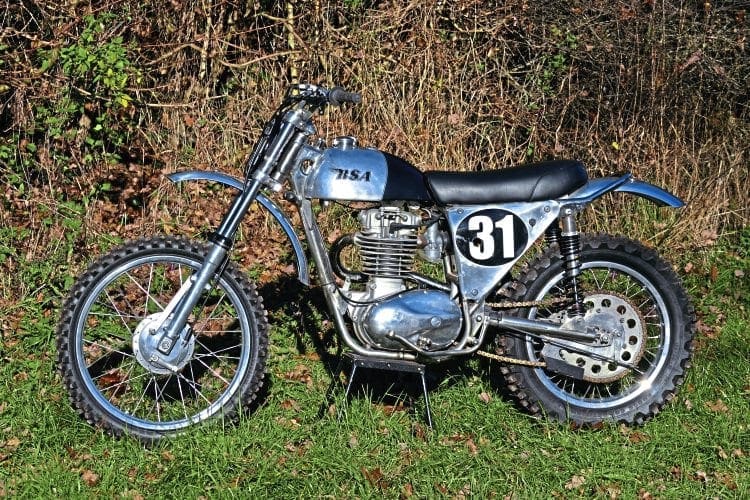
Roger and I crossed paths over a year ago and the offer was made to feature the bike before it was ridden in anger, but life isn’t straightforward, time stretched on and the feature never happened.
Then, during a recent email cull, there was one from Roger, so I zapped one back asking how the bike was. It turns out Roger’s life wasn’t that simple either and he hadn’t ridden the bike in the intervening year and it was still in his kitchen… we were there in an instant.
Now, nice though his kitchen is, it’s not quite right to photograph a motorcycle in, so we headed out into the countryside and parked up the good-looking bike.

Roger elaborated on his brief comments and said the frame was an original Cheney with Marzocchi forks fitted and Reiger rear dampers.
“I know Mick had the petrol tank made specially for the bike, which is a sister one to the Victor he backed Piers Dowell on, and when he’d got the seat done for it there was a gap and that didn’t sit well with Mick, so he hauled the bike along to the upholsterers, who resculpted it to fit properly. This sort of detail is what Mick is noted for,” Roger told me.
He went on to point out the lengths the builder went to in this attention to detail using the threaded fasteners as an example. Where threads protruded from the nuts all had exactly the same amount sticking out.
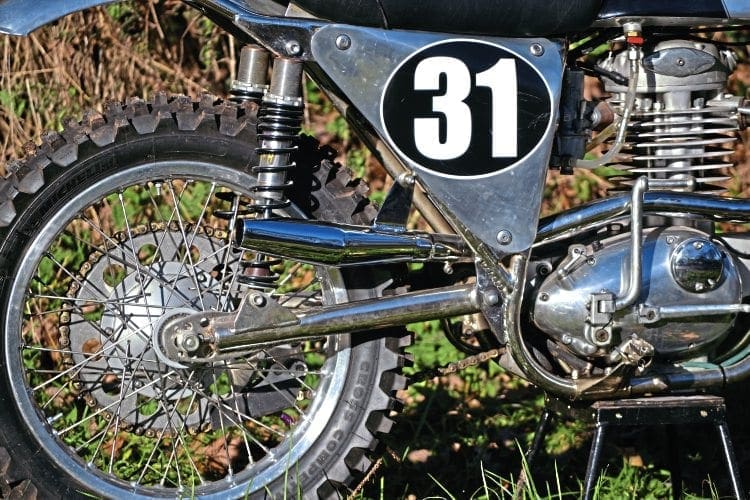
So Roger, what do you know about the spec of the bike? “Well, it’s an NEB three-speed box with an NEB clutch, crank and piston.
“The barrel has been definned, so it doesn’t clog with mud so easily and this was what the factory was doing into the late Sixties. The petrol tank was made for the bike, as was the seat… anything else,” laughs Roger, “you’ll have to ask Mick.” Which is what we did.”
The basis for the bike was one that Mick bought in Denmark and on the original machine Piers Dowell had 35 starts in 2005, 28 wins and one DNF thanks to a needle roller bearing breaking up in the gearbox, then in 2006 the lad took the hill record at Red Marley Freak Hill Climb, so not a bad bike.
However, times move on and things need updating, so the bike was modified and the frame put to one side until Roger wanted something building.
The engine, originally a 441cc Victor, was used in Mick’s Walwin BSA and while a 500cc version now it has also been a 475cc one. “NEB uses Omega pistons and they’re excellent,” says Mick.
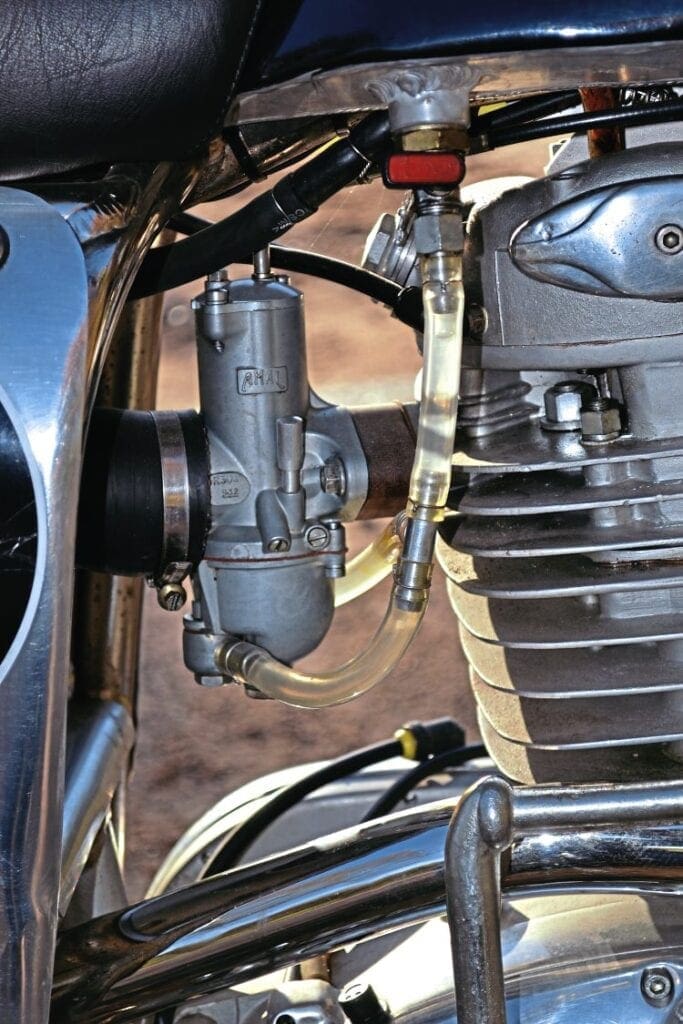
“I wanted to know what went into building a Mick Bennett engine. “Just careful preparation and assembly,” he tells me, “for instance the first task for me is to check how it all lines up in the cases and invariably I’ve to have everything line-bored to make sure things run true. The earlier the engine, the more accurate it is.”
He added quietly that the worst he has seen was a late model B50, which was so out of true it could never have run to its full potential.
Once everything is trued up in goes a three-speed NEB gearbox, an NEB crank and piston with an NEB clutch. NEB – Nigel Bower – is legendary in the Midlands and though his main work has been in speedway, there’s more than the odd MXer with his bits on.
“They’re good and the back-up is excellent,” Mick adds. Moving on to the chassis, Mick called up his notes on his computer and said the bike had all new bearings, his own air box and filter design – with a K and N filter in it – as he’s not that keen on the Cheney one, “nothing wrong with it just it’s not right for me.”
Zipping through his notes he added the rear hub is a Rickman conical one and the front is a Grimeca, which was available and looked the part. I asked about the Nordisk rim and it was apparently on the original Danish machine. “I just polished it up,” he says.

“There’s not a lot more to say about it really,” Mick tells me, “my real forte is knowing where to get what I want making actually made to the spec I want and then just careful assembly after that.”
Such careful assembly went into the exhaust system, which is part-Cheney, part-Walwin and part-Mick Bennett and all nice.
“I like to have the front held in place with a spring so I welded a tab on the pipe and the spring keeps everything in place. Other than that it’s a case of making sure anything that can fracture with vibration is rubber mounted.”
Mick did allow that they’d had an ignition system on which he could start the bike with but Roger struggled.
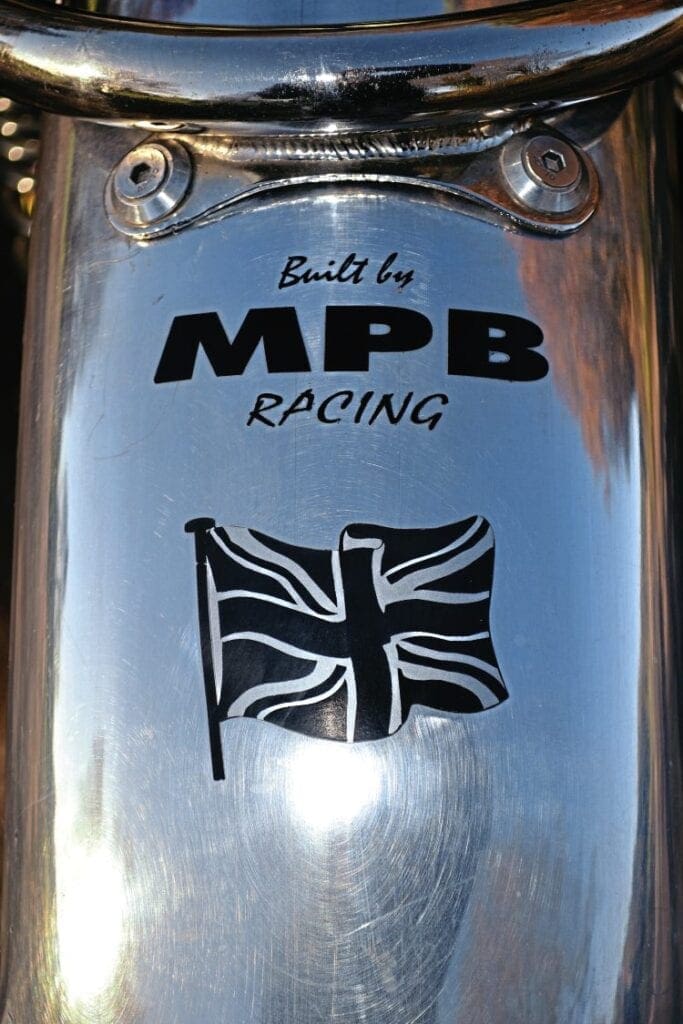
“With high compression and methanol it does take some firing up and I have a technique, but it was even easier to put an Interspan total loss system on. It has a much fatter spark and this is a boon for methanol fuels.
“At first it was going to be several months before an ignition could be built as Fred Stonham makes them all individually, he said he’s had a long-track ignition come back as the rider couldn’t get on with it and that it could be modified to suit a motocross bike if a kit was wanted urgently. It was, and it’s on and everyone is happy.”
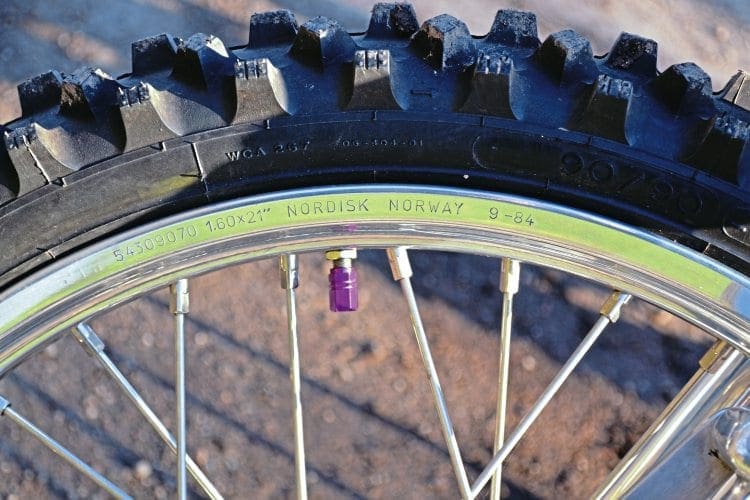
How does it go? It goes very well and Roger has ridden it twice with decent results and the bike is settling down nicely. Roger added after taking a year out to sort his house out he’s itching to get back on track so, 2017 is set to be Simkin’s year.
Roger Simkin
Even though his father was a motorcyclist and had motorcycles when 58-year-old chairman of Acorns MCC Roger Simkin was growing up, the young lad wasn’t encouraged into motorcycling.

“The dangers of the things were always pointed out,” Roger told me as we discussed motorcycling and his superb BSA, “I came a bit late to the sport and only got a bike when I went with a mate to view a Greeves and I came back with an AJS 360 Stormer.”
From that last gasp of British competition machinery Roger progressed to the German Maico make. Though born and bred in Staffordshire, the painter and decorator has been about a bit, spending time in Australia before returning to the UK.
“It was on his return to these shores that his interest in the classic scene was awakened. “I couldn’t believe how the old bike scene had taken off and thought I’d best get involved.”

This involvement began with going to see a BSA B50T on a farm, it was with two other BSAs and Roger bought the lot.
“I turned up at Hawkstone Park for my first race back with what I thought was a nice bike. Mick Bennett pulled up next to me and I quickly realised I had a way to go with bike prepping. Mick offered advice on what to do and it was obvious I’d be better off looking for something a bit better as a starting point.”
What came next was another B50 but an American import proper MX version. “This was much better and though I did a few bits to it, the bike remained pretty standard. After that a Cotton-Triumph turned up and that was a great bike.”
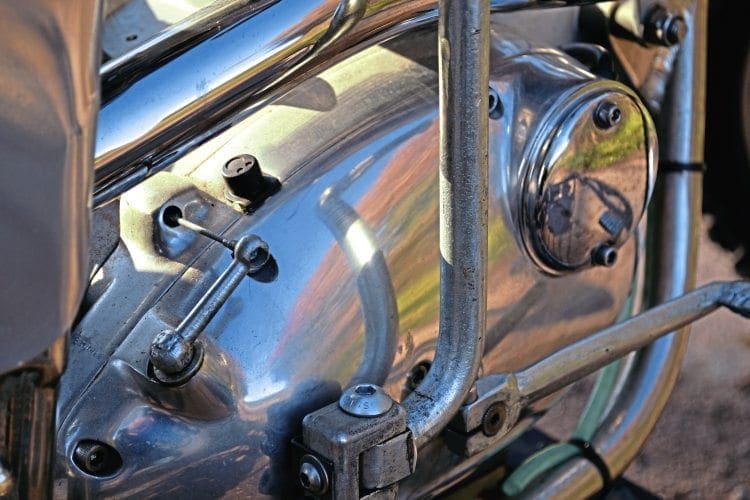
Forsaking the Villiers engine for the 500cc class, Cotton wrapped a frame around Triumph’s unit 500 engine, the production version frames were tig welded but the works machines, built for the likes of Arthur Lampkin, were brazed and the legend of the bike Roger had was it was an ex-Lampkin bike.
“I never really got to the bottom of it but it was a genuine brazed works frame so it could have been.”
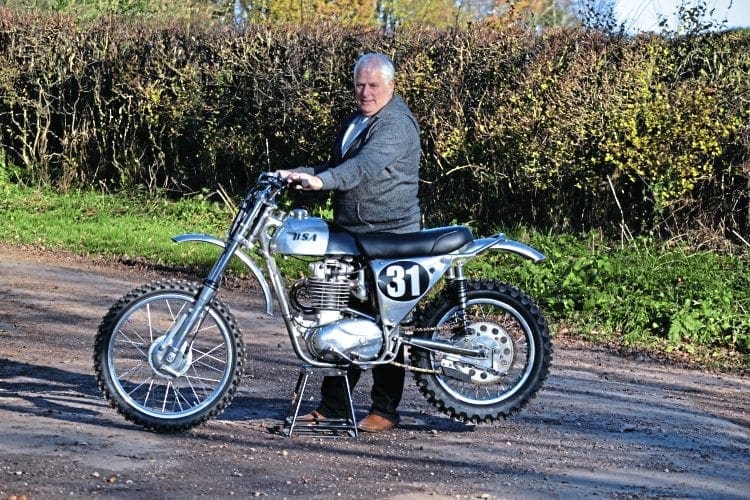
On his second meeting with the bike a chap approached Roger and said: “I’ve wanted one of those for years, never even seen one other than the brochure, how much do you want for it?
“Well, I told him a highish price and thought ‘that’s the last I’ll hear of that’ but a few months later he rang up saying he’d got the money and when could he come and pick the bike up. I quickly rang Mick Bennett and told him I’d sold the Cotton and needed a bike asap and what about the Victor we’d been speaking about? Mick promised to get it sorted and this is the bike you’re photographing now.”
Fine detail
There is a saying ‘the difference is in the detail’ and looking over Roger’s bike there has certainly been some attention to the finer points of the build. The reason for this became clear when we got a chance to chat to Mick Bennett, who built it and he admitted to being a perfectionist.
Mick sourced a number of smaller parts that make anyone looking at the bike nod in appreciation or, in my case, take pics of these bits so you can nod in appreciation.

Do these little touches make the bike go any better? It is an arguable point, as it means the owner feels good about the bike and this has an effect on performance, but the subliminal suggestion is care in one area means care in another, so already the opposition is being psyched out.
MPB Racing
Mick Bennett’s journey through the automotive industry of the West Midlands began with an engineering apprenticeship at Dowding and Mills. From there he joined motorcycle giant BSA as the once proud name teetered on the brink of collapse and when it did, Mick joined the experimental department of Rover.
Eight years later he was in the race car industry fettling suspension and now he’s to be found at Royal Enfield specialists Hitchcock’s Motorcycles in Solihull.
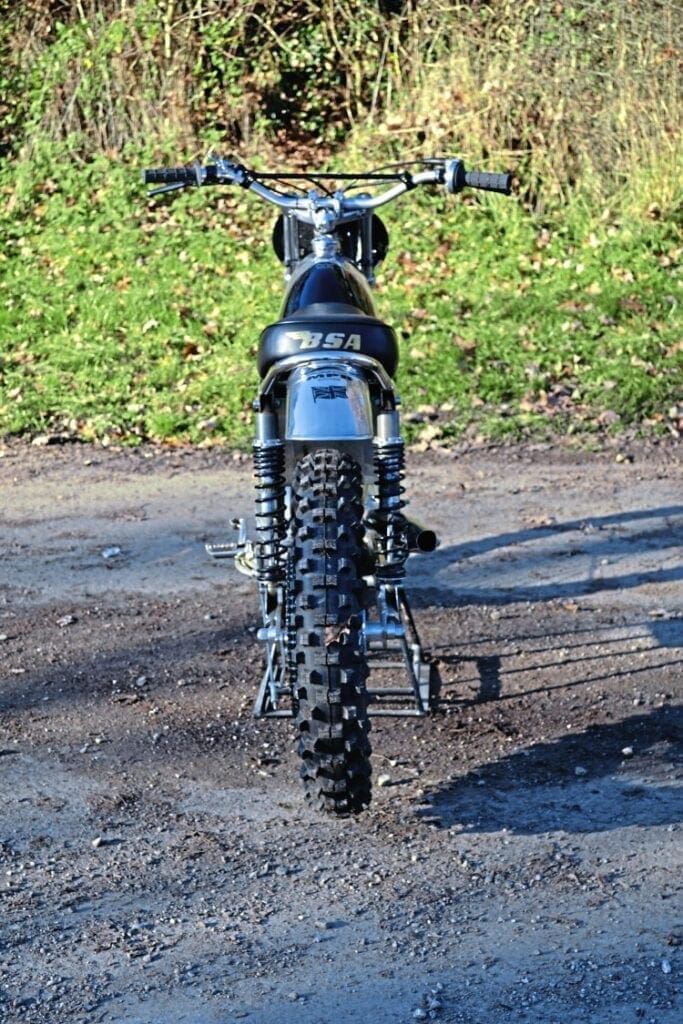
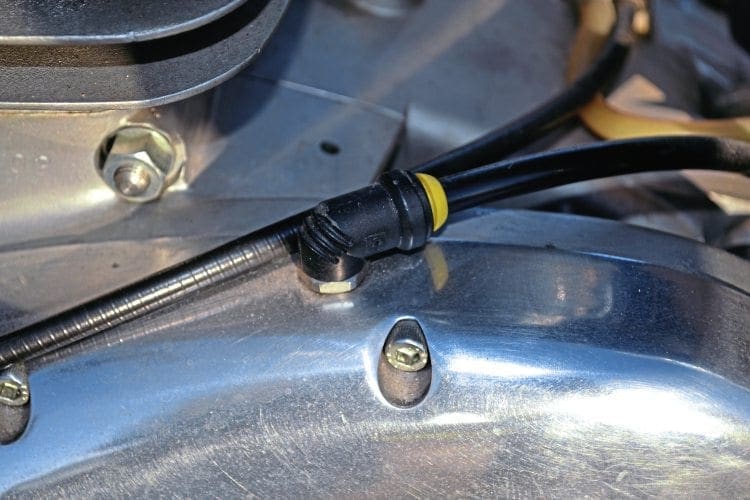
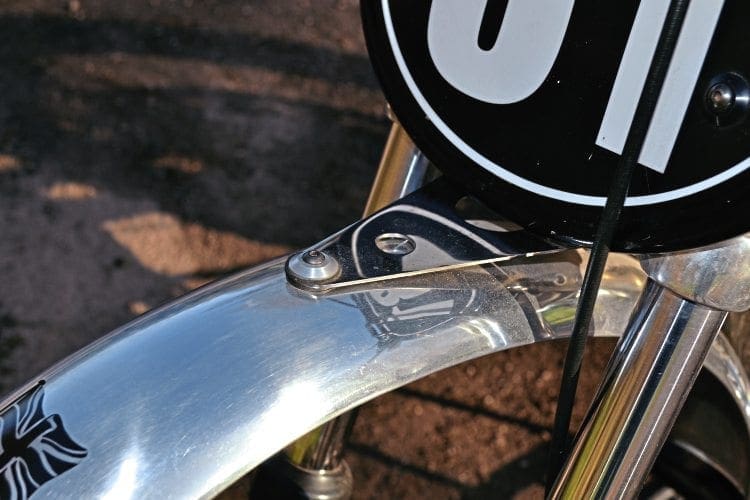
Along the way he has put together some tasty unit BSA MX machines with a reputation for reliability and speed. “I am a bit of a perfectionist when it comes to putting bikes together,” he admitted when CDB called him up to ask about the insides of Roger Simkin’s Victor.
“I like the bike to look right and it is often the little details which can make or break a machine.”
Read more News and Features online at www.classicdirtbike.com and in the latest issue of Classic Dirt Bike – on sale now


